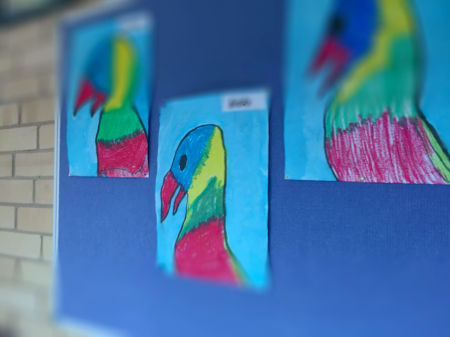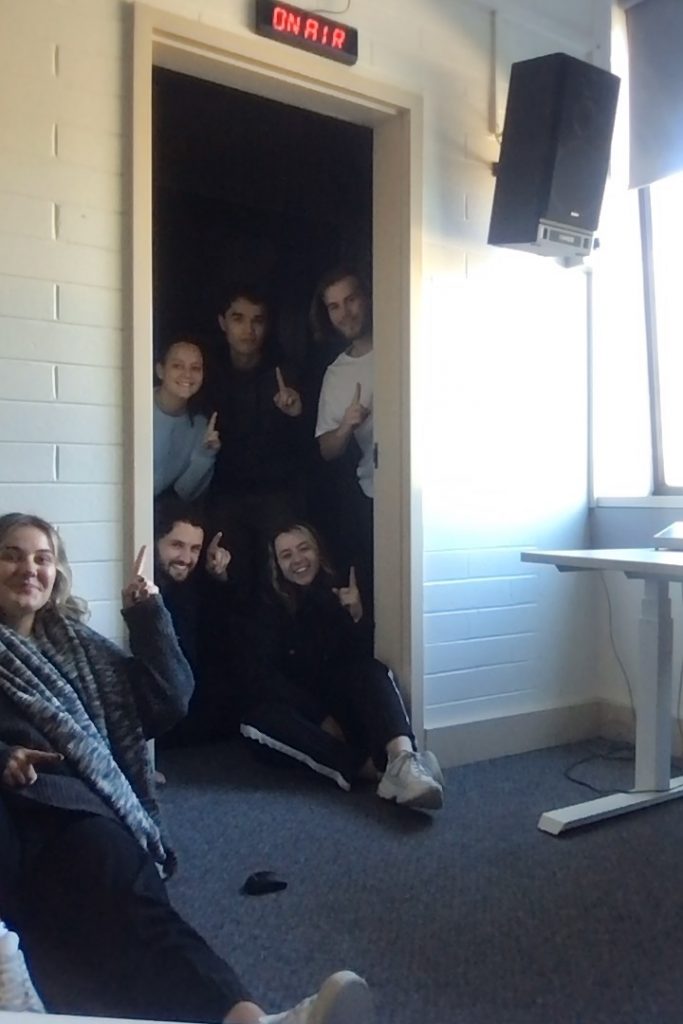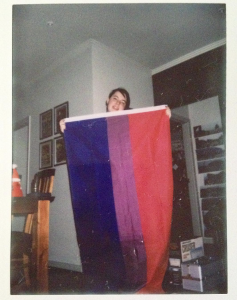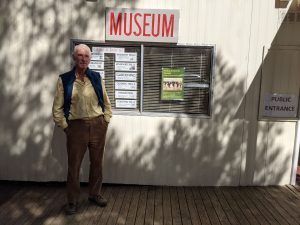A Day in a Learning Support Class

For some, Monday mornings are perhaps the most dreaded time of the week. Workers and students alike are mourning the loss of the weekend and preparing themselves for another arduous week of work. However, for others, Mondays can be great — a return to their sanctuary where they can thrive.
I was presented with the latter scenario on a Monday morning I was spent a day in a classroom at a New South Wales public primary school.
When the bell rings signalling the beginning of the day, students hustle in and sit on the floor, excitedly waiting for show and tell. Zac*, 11, stands up and tells the class about his weekend trip to the Dubbo Zoo. He tells them about his encounter with the tiger and the rest of the class sits bewildered that Zac was allowed to be up close with one of the world’s most dangerous predators.
Once Zac finishes his news the students laugh, clap and ask their classmate a million questions.
“Why didn’t you take me?” asks Mary.
“Next time you can come,” Zac replies.
There is more excitement as the next student tells their news.
Harry, six, asks if he can tell the class his story but Mrs Bonner reminds him that his news day is not until Wednesday.
Such enthusiasm may be rare in some classrooms but this is one special class. With only eight students from kindergarten to year six, a teacher, a teacher’s aide, and a day-to-day timetable planned to the last second, this is a support class catering to children with learning disabilities such as autism, Asperger’s and ADHD.
In NSW, roughly 76% of all school students with a disability attend public schools and 2015 marks the end of the five-year disability action plan by the New South Wales Department of Education. This plan aims to better engage people with a disability by identifying and removing barriers to services for people with a disability through a greater training of staff.
After show and tell, Mrs Bonner opens up the smart board which has a number of interactive activities for the class to participate in, including reading, spelling games and maths competitions. The smart board plays an integral part in the student’s learning, as do the iPads which each student uses.
“The technology has been great for engagement and 21st century learners, they can be connected straight away,” Mrs Bonner tells me later. “It really helps the students with poor muscle tone and hypermobility. Writing is a problem and they can achieve a lot more through using technology. I find it fantastic for real-life engagement.”
The students then split into groups to do some spelling work. While this is happening, Harry asks Mrs Bonner if he can tell me his story that he did not get to share at show and tell.
“I saw a spider at my front door this morning, he was a talking spider,” he says. “He told me his parents died, so I looked after him, his name is Ben, and I’ll bring him in. Promise me you won’t step on him, otherwise he will die.”
I wander over to the students who are currently playing games on an iPad. They all tell me that playing on the iPads is the best part of the day. I join in on a few rounds of Four Pictures, One Word, a rather difficult game which requires you to figure out a word from four pictures. It was a struggle even for me to play this game, but the students were relishing the challenge and working together to guess the word.
David, 11, comes over to see me and wants to share his descriptive story with me. He describes a picture of a person looking lonely.
“This boy is upset and lonely,” he reads. “Half of his family is in the USA and the other half is in Korea. The doctor has also told him that he will have diarrhoea for the rest of the week.”
David bursts out laughing after finishing the story.
“First you feel sorry for him but then you forget about that once you find out he has diarrhoea because it is funny,” he says.
The students are then sent to fitness where they play a modified version of netball — they are allowed to take two steps when they catch the ball before they pass it. Several of the children forget this rule and upon catching the ball they excitedly run the length of the court. A goal is not scored until the end of the game and when this happens the children and teachers erupt in applause.
When determining if a child needs to be placed in a support class structure there is a rather complicated process that takes place.
“Students go into special needs classes in New South Wales because they have something which is called a disability confirmation sheet,” Ms Brodwick, the school principal tells me. “That is done when a school counsellor does a make-up of assessments that might be cognitive, emotional or behavioural.
“That process begins from the schools learning support team, they might say we need to have an investigation because the child is not progressing or performing. Then usually the principal has a talk with the parents who then need to make an appointment with a paediatrician who will do a report for us. The counsellor then becomes involved and does some assessment, where the child may receive a disability confirmation sheet.
“Then if that comes up we make an access request to the department of education. The classroom teacher, the counsellor, myself and any other party involved makes a comment about the child’s progress. That then goes to a placement panel and if there is a position in any schools the parents are offered that places and that’s how they get in.”
At the end of the game David walks up to me acting like a zombie.
“That’s what the walkers do in The Walking Dead,” he tells me.
“Oh, you watch that show?” I ask.
“Yes, I have the first season on DVD, I have the second season on DVD and I want to get the third season on DVD.”
After fitness the students have their lunch break.
The school itself is situated in a low socio-economic area, meaning sometimes there is a lot more to deal with then just a child’s learning difficulties. During the lunch break Mrs Bonner tells me about some problems she faces working in the area.
“We can give them the best education possible but it’s hard when you are not just focussing on the education, you have to focus on their welfare, so things like food. I find that a challenge when kids don’t come to school with food or there’s things that go on at home like violence.”
She tells me it is incredibly difficult to get a child to focus on the education when their home life is not so great; at this point it is necessary to let them off the hook.
When the students arrive back in class after lunch, Brendon is asleep amongst the bean bags. Another student tells Mrs Bonner he has been there all break. She allows him to continue sleeping and puts no pressure on him to return to class work.
At this point I take a moment to look at the room itself. The building is around fifty-five years old. This is especially noticeable when looking closely looking at the roof and walls which stand in stark contrast to the technology within the room. There are a number of colourful artworks, learning materials and timetables across the walls of the classroom.
I am interrupted as a scream comes from the support class next door. Mrs Bonner pops her head in to make sure everything is okay.
After this it’s maths time and Mrs Bonner has prepared a number of activities that stretch the entire age span of the room. Students from kindergarten to year two are focussing on addition, years three and four are doing subtraction and the students in year five and six are doing addition.
I watch Jake, Rohan and John from years three and four participate in a subtraction game. They are shown two playing cards from which they must subtract and the first to answer correctly receives the two card. The three boys are enthusiastic to answer the questions but when Rohan realises he is losing he begins to cry.
It is clear that he is being incredibly hard on himself, however I see a great act of compassion from the other two boys. For a few rounds they sit out and allow Rohan to answer the questions so he can gain some cards. At the end of the game the boys don’t even want to count the cards to see who had won.
I walk over to Mary who is in year six and is currently doing division which she is good at. I notice her prefect badge. She looks to me when she is having trouble with a question and I tell her to keep at it.
After maths, it is the last part of the day. The class is sent to the computer lab where the students become completely immersed in their screens. They are playing games, writing and illustrating. They are not too keen to talk at this point and it is the quietest they have been all day.
The most noticeable aspect of my day spent in the classroom was the sense of structure. Mrs Bonner utilises a timer to ensure everyone is kept on track and a number of visual aids are used to show the students what is planned for the day.
“Timetables and visual aids are very important,” she says. “As soon as there is a change we have to start preparing them for the change. We are currently doing this with the cross-country which is happening on Friday.”
One aspect that astounded me was how calm and in command Mrs Bonner was throughout the day while keeping her class under control. She is incredibly talented and passionate about her job, however she faces a number of challenges.
“There’s not a money tree, she says. “It would be beautiful to have access to speech therapists and occupational therapists, and obviously we are educators but a lot of our students need speech therapy and OT but we just don’t have the financial resources to cater for that.
“Another challenge would be having staff that are trained in special needs, there is quite a big shortage, so you have to make sure training is up to date and that’s a challenge.
“Obviously in support class structures we have up and down days, we have days that are just right off.”
* Names of the students and teachers have been changed to protect their identities
Story by Lucy Bladen



Be the first to comment!